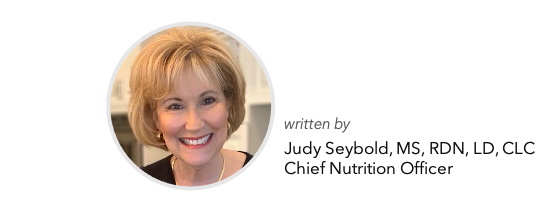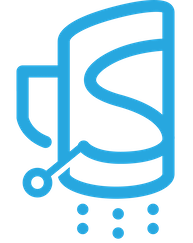Know Your Numbers: How to Manage Your Blood Pressure

We’ve all been there: at the doctor’s office with an inflatable cuff wrapped around the top of the arm. We know the clinician is taking our blood pressure. Still, we’re not sure why that cuff needs to be so tight or what the numbers really mean for our overall wellness. And yet, as long as we get the “all good” from the doctor, we don’t necessarily need to know the details.
Or do we?
In fact, personal accountability is important, especially if you’re one of the 108 million people—or nearly half of all adults in the U.S.—who don’t get the “all clear” because they suffer from high blood pressure. Some don’t even know it. That’s because high blood pressure, also called hypertension, doesn’t always come with obvious symptoms, which is why experts have deemed it a “silent killer.”
Left undiagnosed and untreated, hypertension can put you at risk for heart attack, stroke, diabetes, metabolic syndrome, and so much more. The good news is that it can be treated, with awareness being key. Whether your numbers are within normal range or elevated, you want to pay attention and ask questions. The goal is to know why that cuff is on your arm and what you can do to keep your blood pressure in good stead.
Use Sifter to find foods that can help manage a healthy blood pressure.
Start here →
Know your numbers
So, what is blood pressure anyway? It’s the pressure of blood pushing against the walls of your arteries, which carry blood from your heart to other parts of your body. Your blood pressure is measured by two numbers, presented as a fraction:
- The top number, or your “systolic” blood pressure, shows how much pressure your blood is exerting when your heart is beating, with normal and elevated ranges under 129. In most people, this is a number that tends to rise naturally with age.
- The bottom number, or your “diastolic” blood pressure, shows how much pressure your blood is exerting when your heart is at rest, with normal being below 80.
If either of these numbers is higher than normal, you will likely be diagnosed with hypertension. According to the most recent guidelines put forth by the American College of Cardiology and the American Heart Association, hypertension is a condition that is categorized across three stages: Stage 1 puts blood pressure ranges at 130/80 mm Hg or higher; Stage 2 puts it at 140/90 mm Hg; and, hypertensive crisis, the third stage, is when your blood pressure dangerously exceeds 180/120.
How to manage it
While it’s always best to avoid having high blood pressure altogether, if you’ve got it, there are several key ways to manage it. Barring a hypertensive crisis, which requires immediate medical attention, treatment can vary, depending on your numbers and lifestyle. Wherever you fall on the spectrum, the following considerations can help you bring your numbers down and maintain normal blood pressure levels:
- Get yourself checked. Unchecked hypertension is not safe, so it’s important to get your preventive care. If it’s been a while since your last routine physical, it’s time to make an appointment and know where you’re at—especially as you age, since systolic numbers tend to rise as we get older. Only then can you take the precautionary actions necessary to keep your blood pressure in the normal ranges.
- Eat a well-balanced diet low in salt. There are lots of ways to eat clean, but when it comes to hypertension, the DASH Diet is your best choice. (Tip: Create a MyDietProfile with the DASH Diet SiftTag.). This diet invites you to eat more whole grains, fruit, vegetables, and low-fat dairy products, and less saturated fat and cholesterol. It also does something that’s critical for people with high blood pressure: promotes lower-sodium foods, like herbs and spices, as well as guidelines for limiting your salt intake, which should be 1,500 mg a day or less. You can also keep your sodium down to less than 500 mg each meal.
- Limit alcohol. Having more than one drink a day for women, and two for men, not only raises blood pressure, but reduces the effectiveness of blood pressure medications.
- Get moving. Focus on aerobic activity—the kind that makes your heart beat faster—for about 150 minutes a week. Try walking, jogging, cycling, swimming, and even dancing. High intensity interval workouts that involve short bursts of intense activity can also be good, depending on your level of fitness. Strength train twice a week.
- Manage your stress. Meditation, breathwork, and other mindfulness activities, as well as practicing gratitude, minimize feelings of anxiety.
- Manage your weight. Blood pressure often increases with age – and weight. Even losing a small amount will lower your blood pressure numbers.
- Don’t smoke. Not only will avoiding cigarettes allow your blood pressure to return to normal, but it can reduce your risk of heart disease and improve your health and longevity overall.
- Monitor your blood pressure at home. The goal is to keep regular tabs on where you’re at, to make sure lifestyle changes are working, and to alert you and your doctor to any potential health complications. Work in partnership with your physician to understand how to manage your blood pressure and your health in general.
Now that you know what that cuff is all about, get involved with your own wellness by asking questions and tracking your progress as it relates to hypertension. Know that with proper treatment, management, and awareness, it’s possible to get and keep things in a good place and live a long and healthy life.
July 2021
Additional Resources
Facts About Hypertension
2020 International Society of Hypertension Global Hypertension Practice Guidelines
The Facts About High Blood Pressure
Understanding Blood Pressure Readings
Changes You Can Make to Manage High Blood Pressure
Diastole vs. Systole: Know Your Blood Pressure Numbers
